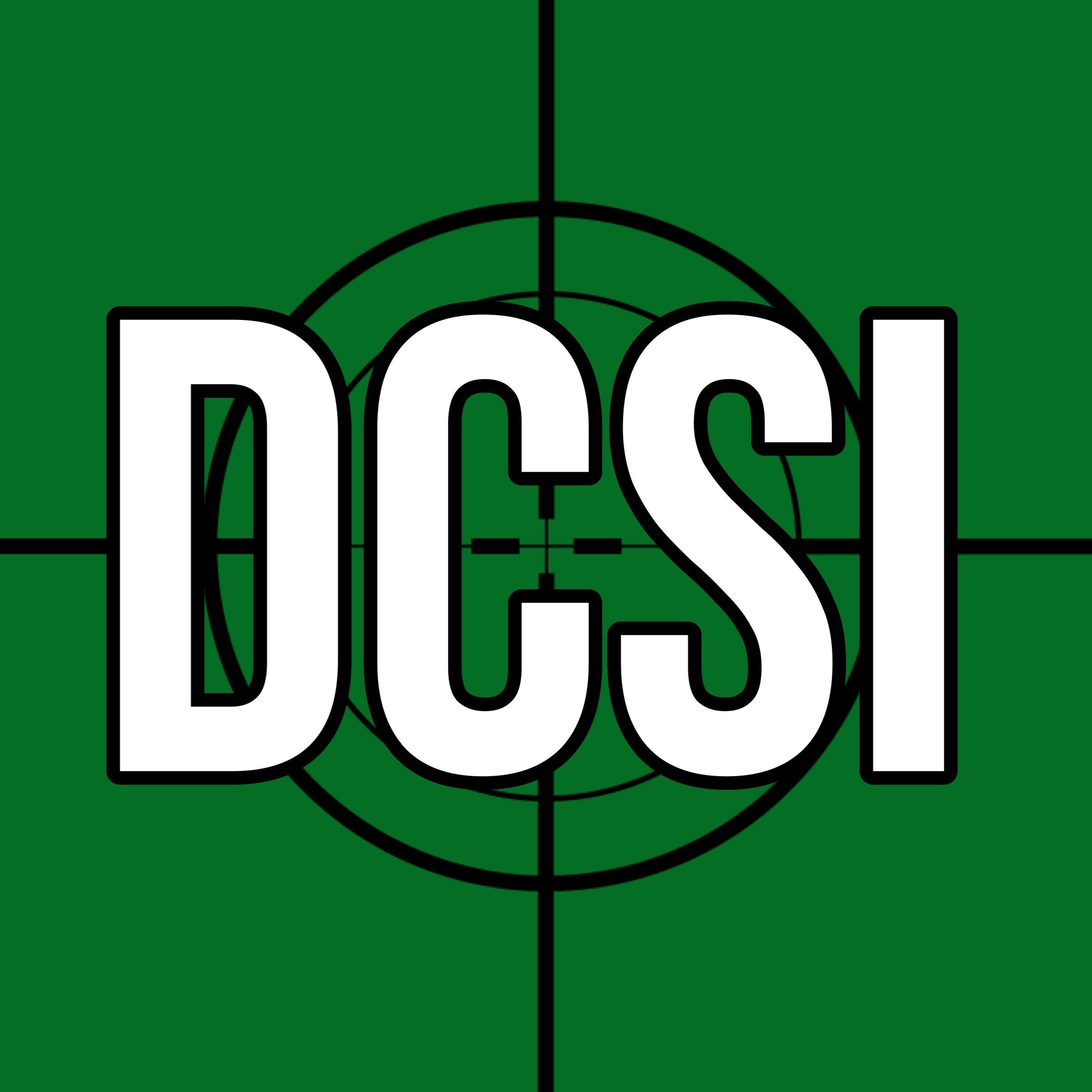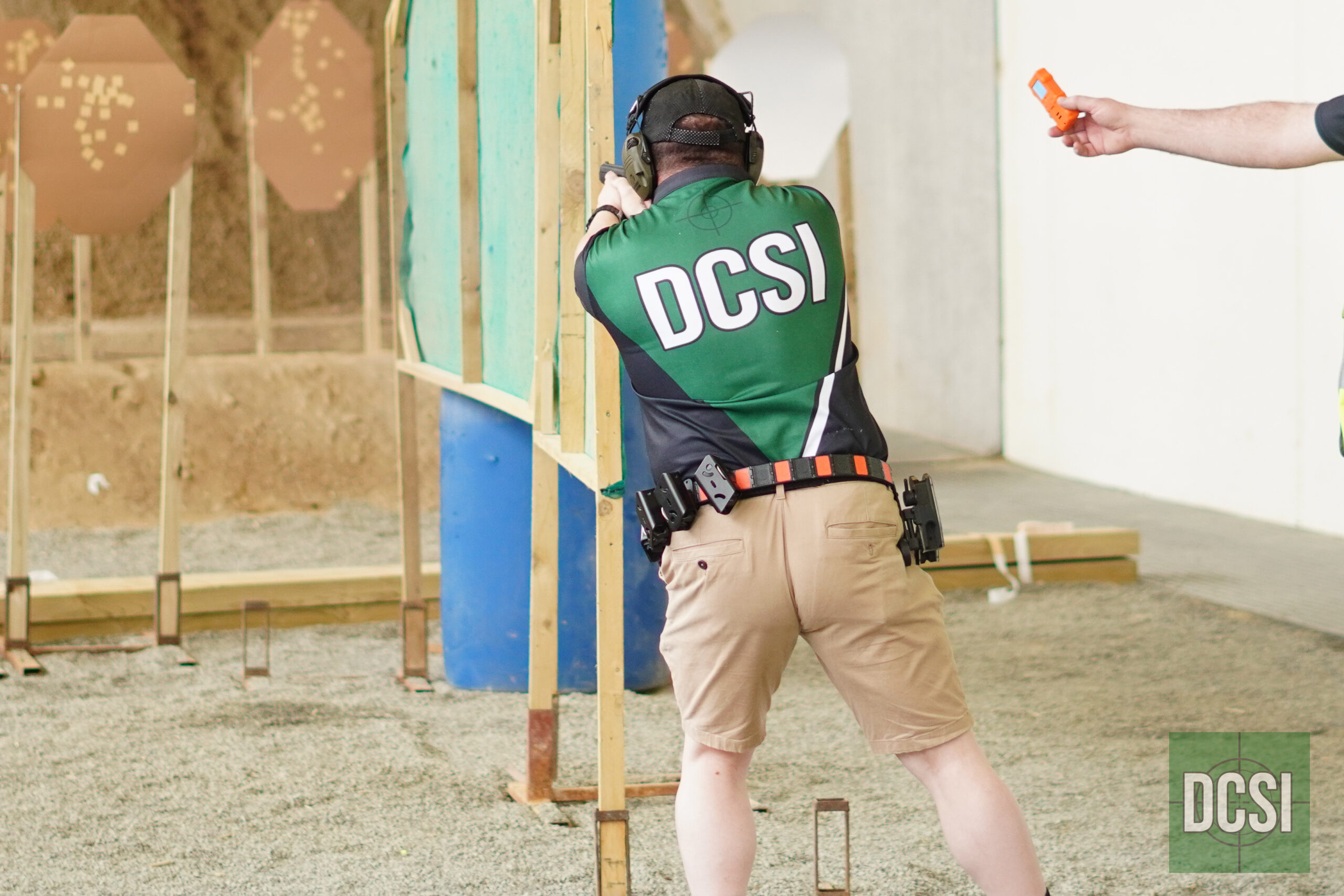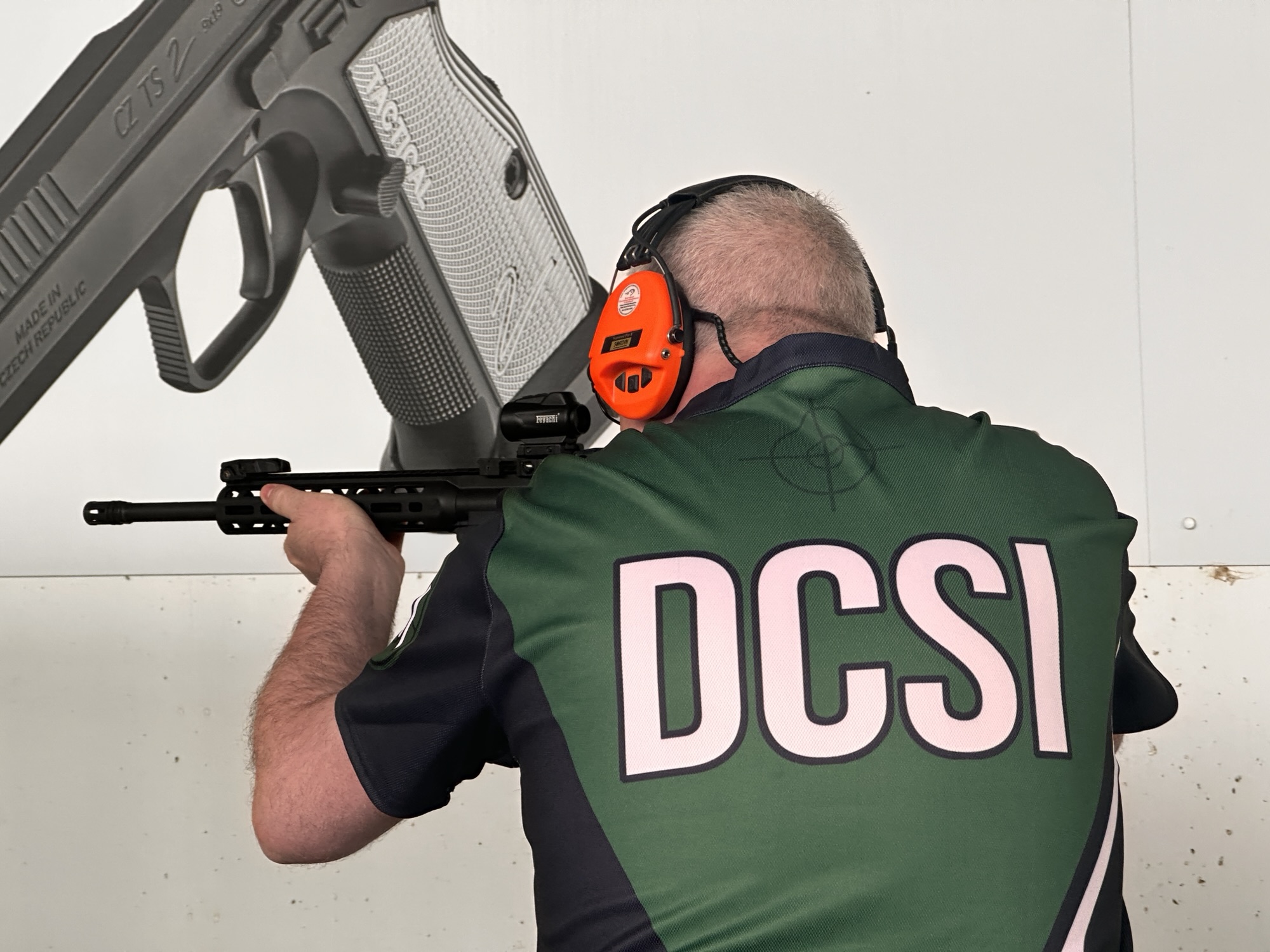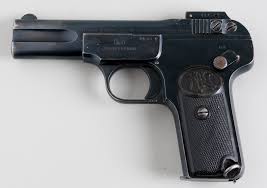
The Pros and Cons of Using a Red Dot Sight on Pistols in Practical Shooting
In the world of practical pistol shooting — whether it’s USPSA, IPSC, IDPA, or 3-Gun — red dot sights (often called pistol optics or slide-mounted red dots) have rapidly become the hot setup. They offer clear advantages but also come with challenges, especially for shooters coming from iron sights. If you’re considering the switch, here’s an honest look at the pros and cons of running a red dot sight on your pistol in competition.
Pros of Using a Red Dot Sight on Pistols
1. Faster Target Transitions
With a red dot, you only have to focus on the target — not the front sight. This “single-plane focus” makes for quicker and smoother transitions between targets, an edge in stages where speed is everything.
2. Increased Precision at Distance
Many pistol stages include steel plates or small targets at 15 to 25 yards (or beyond). Red dots make precise hits at these distances easier because you can see exactly where you’re aiming without covering the target, unlike thicker front sights.
3. Better Low-Light Performance
Indoor matches, shaded bays, or poorly lit stages can make iron sights hard to pick up. A bright red dot remains highly visible, helping you maintain your speed and accuracy even in less-than-ideal lighting conditions.
4. Helps Aging or Challenged Eyes
For shooters struggling with presbyopia (age-related focus issues) or other vision challenges, red dots eliminate the need to align blurry sights. You look at the target and the dot appears superimposed, which is much friendlier to aging eyes.
5. Both Eyes Open Shooting
Red dots naturally encourage shooting with both eyes open, improving your peripheral awareness. This can help with movement, target acquisition, and safety in dynamic courses of fire.

Cons of Using a Red Dot Sight on Pistols
1. Steep Learning Curve (“Dot Hunting”)
One of the most common struggles is “finding the dot” during the draw or after movement. New dot shooters often lose time searching for the red dot when they present the pistol, which can be frustrating early on.
2. Battery and Electronics Dependence
Red dots rely on batteries. While modern models have long battery lives, a dead battery during a match is a serious problem. Some dots also have automatic brightness settings that can behave unpredictably under changing light conditions.
3. Higher Cost of Entry
Mounting a quality optic on your pistol isn’t cheap. Between buying the sight, milling the slide (or getting an optics-ready pistol), and investing in compatible holsters, the costs add up fast compared to sticking with irons.
4. Durability Concerns
While top-tier pistol red dots are rugged, they’re still vulnerable to impacts, moisture, and dirt. In dusty or muddy matches, a fogged or mud-smeared lens can impair your sight picture, unlike irons that can simply be wiped off.
5. Astigmatism and Dot Distortion
Shooters with astigmatism may see the dot as a smear, starburst, or comma instead of a crisp point. This can be mitigated with certain optics or corrective lenses but is worth considering before investing.
Conclusion: Is a Red Dot Right for Your Pistol Game?
For competitive pistol shooters serious about pushing their speed and accuracy, a red dot sight offers clear performance advantages — especially once you overcome the initial learning curve. Faster transitions, better precision, and improved sight visibility make dots an appealing upgrade.
However, they’re not without trade-offs. The need for battery management, added cost, and potential durability issues mean red dots require more attention and care than traditional iron sights.
If you’re ready to commit to the practice and maintenance, a red dot can be a game-changer in practical shooting. But if you value simplicity and minimal fuss, sticking with irons might still suit your style.
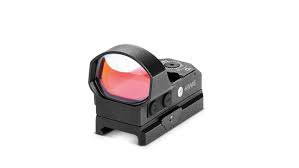
Pro Tips: Transitioning from Iron Sights to a Red Dot on Your Pistol
Switching from iron sights to a red dot isn’t always plug-and-play. Many shooters experience frustration at first, especially with losing the dot during draws or movement. Here are some tips to help you get comfortable faster:
1. Perfect Your Draw Stroke
The most common issue is “dot hunting” — struggling to find the dot during presentation. This is usually caused by an inconsistent draw stroke. Focus on driving the pistol out in a straight line from your chest to your line of sight. Dry fire practice is key here: draw, present, and find the dot immediately over and over until it becomes second nature.
2. Use the Back of the Slide as a Guide
If you lose the dot mid-stage, don’t panic. Use the back of your slide (the rear of the optic window or even your backup irons, if you have them) to get back on track. A small downward correction usually brings the dot back into view.
3. Dry Fire — A Lot
Dry fire is the secret weapon for mastering red dots. Spend time every day drawing to the dot and practicing transitions between targets. Unlike irons, red dots let you see movement and wobble more clearly, which actually makes dry fire even more effective.
4. Experiment with Dot Brightness
Too bright, and your dot will bloom or starburst; too dim, and you’ll lose it in bright sunlight. Practice adjusting brightness so you know what works best in different conditions. As a rule: indoors = dimmer; outdoors = brighter.
5. Keep the Lens Clean
It sounds simple, but a dirty lens can scatter light and make the dot hard to see. Carry a microfiber cloth in your range bag and make cleaning part of your pre-stage routine, just like checking your mags.
6. Consider Backup Irons (Especially Early On)
If your optic and slide allow it, co-witnessed iron sights can help you during the transition. They give you a secondary reference point until your draw mechanics are consistent enough that you no longer need them.
7. Don’t Neglect Recoil Control
Because red dots make sight misalignment obvious, they also expose sloppy grip and recoil control. Focus on locking in a strong, consistent grip — this will keep the dot stable during rapid fire and help with split times.
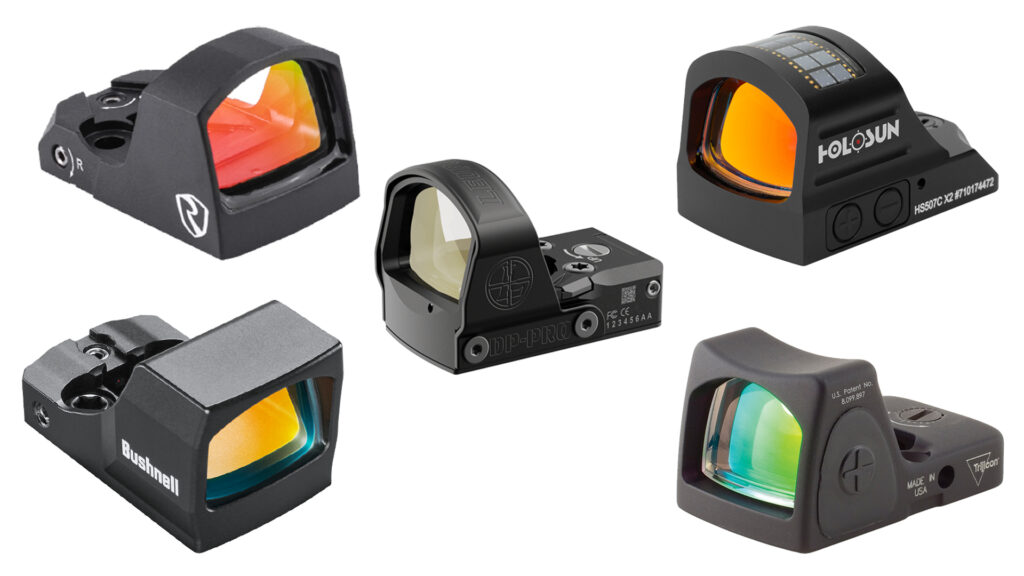
Final Tip: Be Patient
Many top-level shooters struggled at first when they switched to red dots — it’s normal. Give yourself a few thousand reps (yes, really) before judging your performance. Once the mechanics click, most shooters find that red dots feel like cheating compared to irons.
Best Red Dot Sights for Practical Pistol Shooting (2025)
🔥 Top-Tier / Competition-Ready Options
- Trijicon SRO (Specialized Reflex Optic)
- ✅ Massive window for easier dot tracking
- ✅ Excellent durability and battery life
- ✅ Widely used by top USPSA and IPSC shooters
- ⚠️ Larger size may not fit all holsters; expensive
- Leupold DeltaPoint Pro
- ✅ Crisp glass and clear dot
- ✅ Motion sensor for automatic on/off
- ✅ Popular in Carry Optics divisions
- ⚠️ Slightly heavier, battery change requires removal
- Aimpoint Acro P-2
- ✅ Fully enclosed emitter = no worry about dirt, rain, or mud
- ✅ Insane battery life (over 50,000 hours)
- ✅ Military-level durability
- ⚠️ Smaller window; heavier and pricier
- Holosun 507COMP
- ✅ Specifically built for competition (larger window than 507C)
- ✅ Multiple reticle system (circle-dot options)
- ✅ Shake-awake and solar backup
- ⚠️ Slightly bulkier; some prefer simpler dots
💸 Best Budget-Friendly / Entry-Level Options
- Holosun 507C X2
- ✅ Best bang for your buck
- ✅ Durable, with solar and shake-awake
- ✅ Popular even among experienced shooters
- ⚠️ Slightly smaller window than SRO or DeltaPoint Pro
- Swampfox Justice
- ✅ Larger window for the price
- ✅ Good for beginners and club-level competition
- ✅ Affordable with decent glass
- ⚠️ Not as proven under extreme abuse
- Vortex Venom
- ✅ Very budget-friendly
- ✅ Lifetime warranty from Vortex
- ✅ Good for casual competition or training guns
- ⚠️ Smaller window; battery life is modest
- Primary Arms SLx RS-10
- ✅ Newer option with strong features for the price
- ✅ Enclosed emitter variant available
- ✅ Well-rated glass and rugged build
- ⚠️ Less track record in high-level matches (but promising)
Bonus Tip: Window Size Matters
- Bigger window (like SRO or 507COMP) = easier dot acquisition and tracking during recoil, great for competition.
- Enclosed emitter (like Acro P-2 or Holosun EPS) = better for wet, dirty conditions but usually smaller windows.
Current Pro Shooter Favorite?
🔺 Trijicon SRO for those who want max performance in competition
🔺 Holosun 507COMP as the rising star for those balancing price and performance
Quick Guide: Best Dot Size (MOA) for Pistol Competition
MOA (Minute of Angle) refers to the size of the dot.
At 100 yards, 1 MOA = 1 inch.
At typical pistol distances (7-25 yards), it translates like this:
| Dot Size (MOA) | Size at 10 yards | Best For |
|---|---|---|
| 2-3 MOA | ~0.2-0.3 inch | Precision, long shots |
| 5-6 MOA | ~0.5-0.6 inch | Speed, close targets |
| Circle-Dot (e.g., 2 MOA dot + 32 MOA circle) | Covers both small and big targets | Fast target acquisition + precise aim |
✅ Recommended Dot Sizes for Practical Shooting
Most Popular: 5-6 MOA Dot
- Why? Easier to pick up quickly during fast stages and transitions.
- Best For: USPSA, IPSC, IDPA, 3-Gun — where speed often beats micro-precision.
- Example Sights: Trijicon SRO 5 MOA, Holosun 507C with 6 MOA option
Precision Focused: 2-3 MOA Dot
- Why? Smaller dot = more precise aiming, especially on small steel at 20-30 yards.
- Trade-Off: Harder to see quickly under stress or in bright light.
- Best For: Shooters prioritizing longer shots, or Open Division guns with compensators that manage dot movement well.
Hybrid: Circle-Dot Reticle (Multiple Reticle System)
- Why? Large outer circle helps you find the dot fast; small center dot keeps precision.
- Best For: Shooters who want speed and the ability to take precise shots.
- Popular Models: Holosun 507C, 507COMP (32 MOA circle + 2 MOA dot)
🔥 Pro Tip:
- For most pistol competitors: 5-6 MOA is the sweet spot.
- If you’re older or have vision issues: Bigger dot (6 MOA) or circle-dot reticles help massively with visibility.
- If you’re doing a lot of precision stages (think small steel at 25+ yards): Consider 2-3 MOA.
✅ My Simple Advice
If you’re just starting out in practical shooting with a red dot:
➡️ Go with 5 MOA or a circle-dot option — it strikes the best balance between speed and accuracy.
